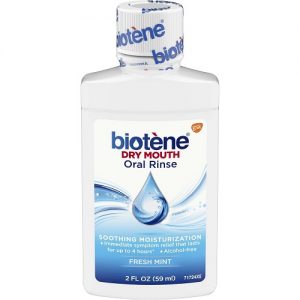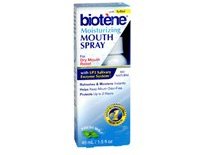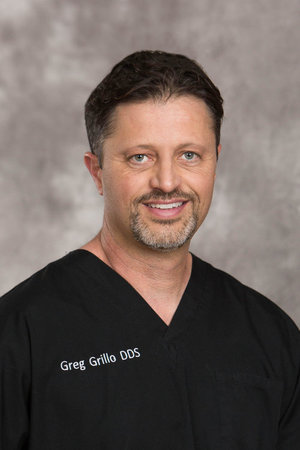How to Reverse Gum Disease: Steps You Can Take Towards a Healthier Mouth

Gum disease periodontal disease and bad breath have been around as long as humans. This disease is often passed on through genetics and it often starts off as gingivitis. Swollen gums that are sore to the touch—that may sometimes bleed if you don’t brush gently—are the first sign that you may be developing gum disease.
Remember Miguel de Cervantes, author of the book, Don Quixote? He said that: “Every tooth in a man’s head is more valuable than a diamond.” We agree. So, how do you go about reversing the effects of gum disease?
The first step is getting a diagnosis so that you can get started on treating gum diseases, such as periodontal disease, gingivitis, bad bread, receding gums and damaged gum tissue. You might want to ask around to see if gum disease runs in your family so that you go into your dentist’s appointment with as much information as possible. This may seem stressful, but many patients find it relaxing to learn why they haven’t been feeling good.
After this initial appointment, you should work with your doctor to come up with a suitable plan for treatment. A good dentist will listen to your concerns, adjust a treatment plan to your individual needs and lifestyle, and take the time to answer any questions you might have. You’ll also discuss your committing to a more regimented periodontal plan, one that will protect your teeth and cover any gaps in your current routine. You’ll learn which tools you should use and how you should clean your teeth. At this time, the dental hygienist may also clean your teeth for you, to remove the more stubborn plaque as well as some tartar, which is also known as calculus. Some patients notice a difference in how their teeth feel and look right away. After cleaning your teeth a few times, you should start to see the pockets or discolored spots on your teeth becoming a bit smaller.
After some time with this home new cleaning routine, you’ll need to another dental appointment to see how your teeth look and how your oral health is progressing. At this point, your dentist will reevaluate how deep the holes in your teeth are. Now is a good time to ask any questions about your daily routine, if you still have them. Your dentist will also see how tender your gums are. Now, they will decide whether or not you can move forward with less aggressive treatment or whether you’ll require more significant intervention. Sometimes, pockets are still too deep at this time, which may require more scaling.
“Gum disease is controllable, but it’s not curable. The key is to implement strategies to halt the disease process and preserve your gum and jawbone. Once the bone is gone, it never grows back.”
If your dentist doesn’t like the look of those pockets, they may recommend that you schedule a date for gum surgery. This occurs in cases when it doesn’t appear that the progress of the disease can be slowed without extraordinary means. The top priority is saving and protecting your teeth so that your smile, your teeth’s appearance, your speech, and your ability to properly chew and digest your food will remain unchanged. The surgery basically involves the dentist retracting the gums from your teeth. Then your teeth and gums are cleaned to stop periodontal disease. At times, your dentist is able to help tissue regrow in areas where it has died, by the process of periodontal regeneration. In this case, certain materials are used that stimulate the tissue and bone in your mouth to grow again. Keep in mind that this is only useful in certain cases of gum disease.
After surgery, the next step in your periodontal treatment is ensuring that the time and effort you’ve invested in your teeth at this point are going to result in better overall oral health. At this time, you should make sure to continue brushing and flossing as your dentist has instructed. Now, you’ll have to come to the dental hygienist every so often, so that you can continue to protect your teeth. This will be every three to six months, with frequent exams after this. Over the course of the next few years, your periodontist is going to work with you to fully understand which oral diseases you may be at risk for, due to your family history, and to safeguard you when it comes to any future issues. A complete exam will often include assessing how well you’re doing at home with preventing plaque buildup and bacteria growth in your mouth, charting how deep any cavities or holes are, and screening for any signs of oral cancer. Sometimes, the periodontist may even take an X-ray, depending on what your teeth are showing. Many dentists advise that patients think of these post-surgery visits in a positive light—they’re an important opportunity for you to take the reins when it comes to the health of your teeth and gums, so that you’re able to feel confident in your oral health routine and in your ability to assess how your mouth feels and looks.
Many patients find that keeping a journal of their oral health (jotting down which days you floss, notes on a time you might have forgotten to brush your teeth before bed or when you forgot a toothbrush on camping trip, so that you can troubleshoot to prevent these patterns from recurring in the future), can help keep them honest, aware of their dental cleaning habits, and accountable. There are even some great apps that can help you keep track of dentistal appointments, the number of times you floss and brush a week, and your sugar and carbohydrate intake. We love DentalStat, MyDentist, Medscape, and iRomexis, though there are a lot of good ones out there. Some are free and others you have to pay for. Whether it’s through an app or by journaling, we recommend you find a system that works well for you, and one that helps you keep yourself on track when it comes to oral hygiene.
With patience, new habits, and a new sense of why tooth and gum health is important in the first place, you can make the most of a bad situation. Use the opportunity to learn more about your dental health, and continue to use these lessons long after your mouth is healed. Products like this alternative to toothpaste and mouthwash and this toothpaste meant for aching gums can be a great relief. We also love mouthwashes and sprays like Biotene Mouthwash and Biotene Gum Spray, which are simple, affordable ways to cut down on the bacteria that cause decay.
Relate Posts to Read:
Does Toothpaste for Gum Disease Work?
Medically Fact-Checked & Written by Our Dental Editorial Team
You can read more about our editorial guidelines by clicking this link and learn more about the Emergency Dentists USA editorial team here.





